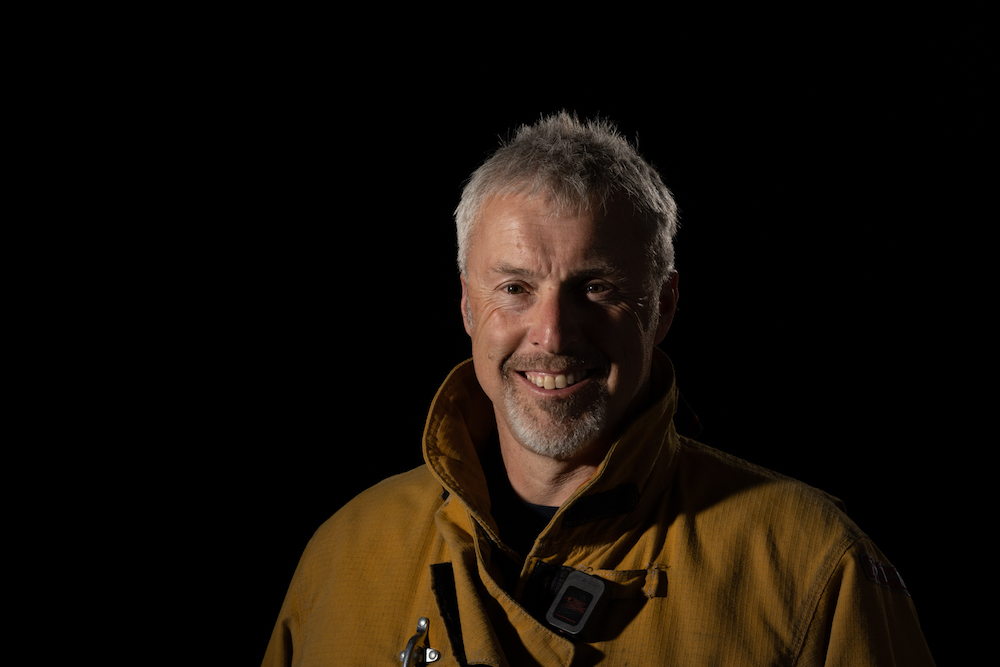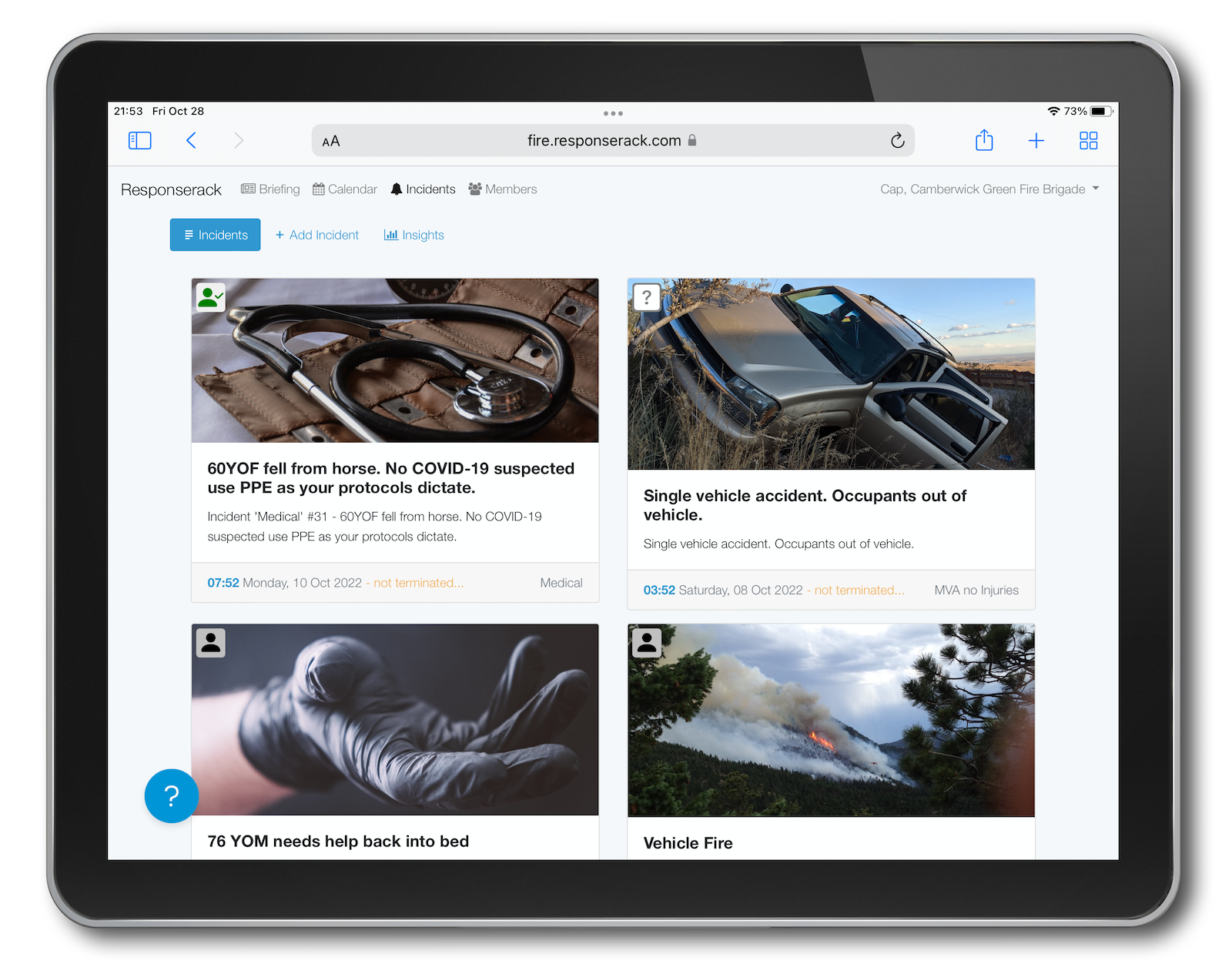
Members of our community have been interviewing CCCFD members for their ‘It Takes A Community’ contributions to the Mountain Messenger publication.
Years ago I was backpacking in Europe, and staying at a small fishing village of Cadaques on the coast of Spain, when wildfire came over the mountain ridge - surrounding the village - and trapping us all between the fire and the sea. I joined the villagers (wearing shorts and my full backpack of belongings) in fighting the fire with branches pulled from bushes, and quickly became part of the group. Despite language and cultural differences I was accepted in that moment. That experience stuck with me, and I joined Coal Creek Canyon Fire Department to become part of the CCC community.
I’ve lived in CCC for over twenty years with my wife, and daughter, and I work as a software developer. I volunteer with CCCVFD and also with OSMP where I observe raptors; golden eagles, peregrine falcons, prairie falcons and also monitor bats. I love the mountains, and I am happiest when I’m outside in them. I’ll sit in the early morning snow to observe the raptors, and alone in the dark on the prairie to count bats drinking at a waterhole. I hike with my two dogs.
CCCFD has afforded me great friendships and many amazing experiences. I’ve explored every nook and cranny in the district, seeing places that most Canyonites never see. I joined to become part of the community, and I’ve received that and much much more.

Adam Jack - Firefighter / Responserack Founder
First and foremost I am a firefighter, responding to all forms of emergencies, and available for whatever assignments are required to help fellow Canyonites. I am also the Information Officer where I manage technology to support our firefighters, and our response efforts.
I develop and maintain everything from detailed GIS maps of our homes/roads/water sources (once printed into books or maps, now also electronically on iPads), systems for notifications to volunteer mobile devices with directions (from the Computer Aided Dispatch system used by 911 operators), and various other technologies for communicating amongst the membership (for training, qualifications, and discussions.) Since the flood that role has extended to the use of social media to communicate with the community from our website to Facebook, Twitter/X, and Nextdoor. Today the department’s “information management” has grown to the point that we have a small team of technical volunteer firefighters who work on this together.
When a larger incident occurs I respond as a firefighter, but also assist with “resource coordination” figuring out who is available to do what/when, and who can cover the Canyon for other incidents that might occur. We have access to technology to simultaneously send messages to all firefighter mobile devices, home phones, work and home emails and text messaging to quickly gather availability. With mobile phones I can sometimes do that from the incident scene, however I do try not to interrupt family dinner too often (or I’ll hear about it.) At the end of day, or when opportunity allows/necessity dictates, we publish communications to the community via our website and then social media.
Being able to be part of the solution to a number of Canyon problems over the years has been a reward in itself.
Over the decades I’ve been on most of the larger incidents (Walker Ranch Fire, Plainview Fire, Flagstaff Fire, Train Derailment, 2013 Flood and many other incidents) and I’ve experienced how quickly things can change. A situation can quickly escalate; Winds can shift, pushing a fire faster or to a new direction, rains can build to become a powerful flash flood, hazardous materials can leak from pipes or trains or vehicles. Sign up for county dispatch notifications on all your devices (for all your family members) and keep that up to date through phone/number changes. Sheltering in place might be all you need to stay safe, but you need to receive the word to do so; forewarned is forearmed.
Living in the mountains is a joy but one needs to take responsibility for some risks, at times. Registering for important emergency notifications brings peace of mind.
My family and I have been through quite a number of risky fire seasons, and more than a few rounds of mitigations, including help from Saws & Slaws. We live on an exposed slope, so keep documents (passports, old printed photos and such) in a safety deposit box in the flatlands with digital backups in the cloud, and we’ve done a recent video walkthrough to inventory our belongings in the house, garage and immediate surroundings.
Since I’m likely to be on a fire if/when an evacuation order is called, my wife and daughter have an evacuation list (with prioritized groups, based upon how much time is available.)
We have made sure we all are aware of all the four main routes in and out of the Canyon, so if one or more are blocked we know the alternatives. We have agreed upon a meet up point down below, however cellphones make meeting up easier these days.
For wildfire: Paying attention to fire conditions and fire restrictions is helpful so Canyonites won’t be themselves a cause of the fire or incident; which is important since 90% of wildland fires are human caused. Paying attention to the Canyon, and mountains around us, is also valuable because together we have eyes on almost every corner of the Canyon. If you see something say something and to 911 not to social media. Time is critical when getting on a fire, and doing anything but calling 911 is costing time. We are volunteers but we take responsibility for our Canyon and community very seriously; we’d much rather be dispatched by 911 and respond and find that “smoke in the trees” was “water dogs” (low transient clouds after rain) than let a fire (say from lightning in those same rains) get a head start.
For other incidents: Have an address marker that clearly identifies your driveway. Maps and mapping tools can get responders to your physical lot, but address markers help us save time getting to you. Having somebody come meet us helps if you have multiple buildings or entrances.
In general: Learn about your fire department and see if you have the time, motivation and ability to volunteer. It is no small undertaking, but it has great rewards. Alternatively, ensure you and your family, friends know to communicate with your local fire department via 911, since it is the place to communicate in an emergency.
Related Fire Department Links - https://linktr.ee/cccfd
Sign up to hear more from Responserack on Volunteer Fire Departments, USFA NERIS and USFA NFIRS.
Responserack provides services for volunteer fire departments; member information services, incident reporting, NFIRS and so much more.
